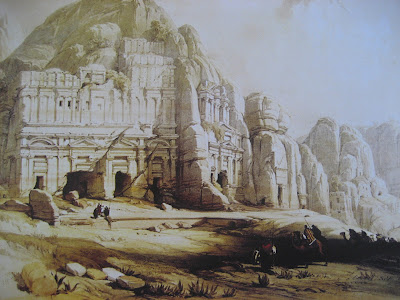Secrets of
the Dead: The Lost Ships of Rome was aired on PBS in November 2010. Now it is
available on a DVD. It is an interesting and informative documentary about
ancient Roman history, but there are some loose ends and some unanswered
questions, as I will explain below.
Here is
some information about the production:
** Narrated (in English) by Liev Schreiber
** Written
and produced by Robert Hartel** Narrated (in English) by Liev Schreiber
** Underwater Photography: Roberto Rinaldi
** Total Running Time: 52 minutes
In 2009 five wrecks of ancient Roman ships were discovered on the bottom of the sea near Ventotene, a remote Italian island ca.
Timmy
Gambin is the leader of the archaeological team, while Roberto Rinaldi is the
leader of the diving team.
From time
to time the main story is interrupted by several short digressions about the
ancient history of the island, which cover the following cases:
* The imperial palace, which the Roman emperor Augustus built for himself
* The Roman system of water management, which includes two underground cisterns
* The Roman harbour, which was excavated from the rock of the island
* Roman dishes based on the ancient cookbook by Apicius, including the famous fish-sauce known as “garum”
* The history of Julia, Augustus’ only daughter, who was banished to this island for five years (but the Roman name of the place – Pandateria – is never mentioned)
Most of the information about Julia and her tragic fate is provided by an on-screen witness: Annelise Freisenbruch, a classical scholar, who is the author of The First Ladies of Rome: The Women behind the Caesars (2010, 2011).
During the interview there is a glimpse of another book on the table next to her: Julia Augusti: The Emperor’s Daughter by Elaine Fantham (2006).
These digressions are not directly relevant for the diving project, but they are interesting and welcome, because they give the film a wider scope.
3D computer-generated
images are used to show us what the imperial palace looked like; how the Roman
system of water management worked; how the Roman harbour basin was excavated;
and how the ancient containers (known as amphorae) were stacked when they were being
transported in a Roman cargo ship.
Here is a
brief report of the diving project:
DAY 1
The
divers reach wreck # 1 and recover an amphora, which is brought to the surface.
It is from Italy
DAY 2
The
divers reach wreck # 2 and recover a Roman bowl used for grinding food. It is brought to the surface.
DAY 3
The
divers attempt to reach wreck # 3, but they do not succeed
DAY 4
Strong winds prevent the team from going out to the diving sites. Instead Gambin
and Rinaldi perform an underwater inspection of the Roman harbour.
DAY 5
The
divers attempt to reach wreck # 4. They see some mysterious ancient cylinders,
but they are unable to recover one of them.
This film
is well-done, and the material is well-organised: scenes on the water alternate
with scenes on land. Words and pictures complement each other very well. The underwater
footage of the ancient Roman items is surprisingly clear and sharp. But when we
get to the end of the film, when the team is celebrating with wine and homemade
garum, there are some loose ends and some unanswered questions:
After five
days what do they have? One amphora and one bowl. Not much for five days. In
the beginning of the film we are told that the team has only five days. But we
are never told why the project must be completed in such a short time.
Five days
to recover items from five different wrecks in deep water sounds like a very
tight schedule. As it turns out, the schedule is too tight. Why not allow for a
day with bad luck? Why not allow for several days with bad weather? If these
five wrecks are so important, why not make sure there is enough time to recover
at least one item from each of the five wrecks?
Wreck # 1 holds
perhaps 100 amphorae. Why take only one? Why not take 2, 4 or 6 to have
more evidence? The same question can be asked about the bowl recovered from
wreck # 2.
The amphora
is lifted with a single rope tied around its neck, and the members of the team worry
that the ancient item is going to break. Why not use a net, which is a much safer
way? The bowl from wreck # 2 is lifted in a net. Perhaps they did not think of
using this method until the second day?
What
happened to the amphora which was recovered? We are told it was taken to
the local museum to be cleaned up and to be inspected. What did it look when it
was cleaned up? What did the archaeologists find out when it was inspected? The
same questions can be asked about the bowl recovered from wreck # 2.
I like this
film. It is interesting and informative. It covers a lot of ground in less than
an hour. I want to recommend it. But I cannot ignore the loose ends and the unanswered
questions, and therefore I cannot give it more than four stars.









